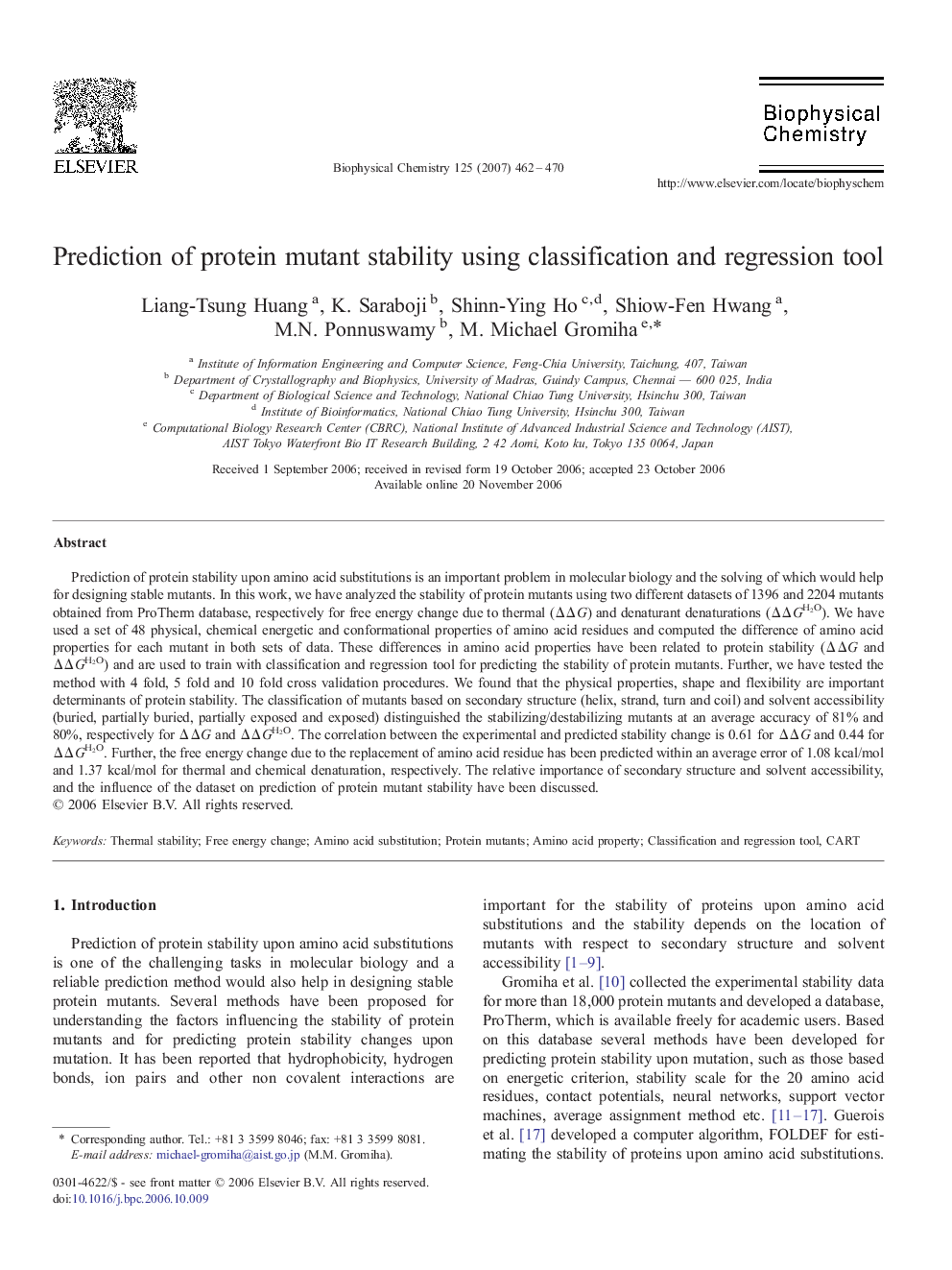| Article ID | Journal | Published Year | Pages | File Type |
|---|---|---|---|---|
| 5372301 | Biophysical Chemistry | 2007 | 9 Pages |
Prediction of protein stability upon amino acid substitutions is an important problem in molecular biology and the solving of which would help for designing stable mutants. In this work, we have analyzed the stability of protein mutants using two different datasets of 1396 and 2204 mutants obtained from ProTherm database, respectively for free energy change due to thermal (ÎÎG) and denaturant denaturations (ÎÎGH2O). We have used a set of 48 physical, chemical energetic and conformational properties of amino acid residues and computed the difference of amino acid properties for each mutant in both sets of data. These differences in amino acid properties have been related to protein stability (ÎÎG and ÎÎGH2O) and are used to train with classification and regression tool for predicting the stability of protein mutants. Further, we have tested the method with 4 fold, 5 fold and 10 fold cross validation procedures. We found that the physical properties, shape and flexibility are important determinants of protein stability. The classification of mutants based on secondary structure (helix, strand, turn and coil) and solvent accessibility (buried, partially buried, partially exposed and exposed) distinguished the stabilizing/destabilizing mutants at an average accuracy of 81% and 80%, respectively for ÎÎG and ÎÎGH2O. The correlation between the experimental and predicted stability change is 0.61 for ÎÎG and 0.44 for ÎÎGH2O. Further, the free energy change due to the replacement of amino acid residue has been predicted within an average error of 1.08Â kcal/mol and 1.37Â kcal/mol for thermal and chemical denaturation, respectively. The relative importance of secondary structure and solvent accessibility, and the influence of the dataset on prediction of protein mutant stability have been discussed.
